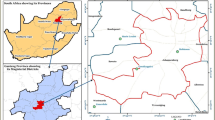Abstract
Background
Globally, many countries worldwide aim at increasing the environmental sustainability of waste management activities. Special attention is devoted to bio-waste, as its improper handling may have severe environmental consequences. In particular, most waste management strategies should encourage diverting bio-waste away from landfills to reduce emissions of greenhouse gases and leachate.
Legislative context
The European Waste Framework Directive (WFD 2008/98/EC) defines bio-waste as “biodegradable garden and park waste, food and kitchen waste from households, restaurants, caterers and retail premises and comparable waste from food processing plants”. Bio-waste should not be confused with the wider term “biodegradable waste”, which covers also other biodegradable materials such as wood, paper and cardboard. In Europe, landfilling of untreated bio-waste is being progressively reduced to meet the requirements set by the Landfill Directive (1999/31/EC). Other options for bio-waste management are then prioritised (e.g. biological treatment), in line with the so-called waste hierarchy, the legally binding priority order for waste management established by the Waste Framework Directive (2008/98/EC).
Method and outcome
However, following the waste hierarchy may not always lead to the identification of the most environmentally sound option, and new approaches are thus needed for a more differentiated and science-based support to decision-making for bio-waste management. For this purpose, the Institute for Environment and Sustainability of the Joint Research Centre has developed guidelines that provide environmentally sound support to decision-making and policy-making for bio-waste management using life cycle thinking and life cycle assessment. The methodological approach developed in these guidelines is presented and contextualised in this paper.



Similar content being viewed by others
References
COM 235 (2010) Communication from the Commission to the Council and the European Parliament on future steps in bio-waste management in the European Union. Availabe online at http://ec.europa.eu/environment/waste/compost/pdf/com_biowaste.pdf
Directive 1999/31/EC of the European Parliament and of the Council of 19 November 2008 on waste and repealing certain Directives—Official Journal of the European Union L 182/1. Available online at http://ec.europa.eu/environment/waste/landfill_index.htm
Directive 2008/98/EC of the European Parliament and of the Council of 19 November 2008 on waste and repealing certain Directives—Official Journal of the European Union L 312/3. Available online at http://ec.europa.eu/environment/waste/framework/index.htm
European Commission–Joint Research Centre–Institute for Environment and Sustainability (2010) Supporting environmentally sound decisions for waste management—waste technical guidelines. Available online at http://lct.jrc.ec.europa.eu/assessment/publications
Manfredi S, Christensen TH (2009) Environmental assessment of solid waste landfilling technologies by means of LCA-modelling. Waste Manage 29:32–43
Acknowledgments
This work has been funded by the European Commission, partially supported through the Commission-internal Administrative Arrangement (n.070307/2007/481271/G4) between the Directorate General Environment and the JRC. The authors wish to thank RDC Environment for its contributions (by means of contract) in support of the drafting of this guide. The authors also wish to thank David Pennington and Marc-Andree Wolf from JRC-IES for their contributions in support to the reviewing of this guide.
Author information
Authors and Affiliations
Corresponding author
Rights and permissions
About this article
Cite this article
Manfredi, S., Pant, R. Improving the environmental performance of bio-waste management with life cycle thinking (LCT) and life cycle assessment (LCA). Int J Life Cycle Assess 18, 285–291 (2013). https://doi.org/10.1007/s11367-012-0497-5
Received:
Accepted:
Published:
Issue Date:
DOI: https://doi.org/10.1007/s11367-012-0497-5




